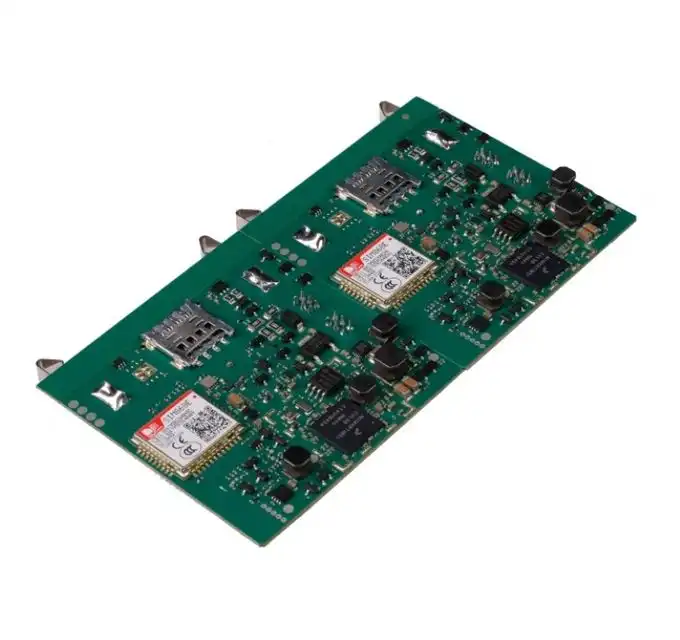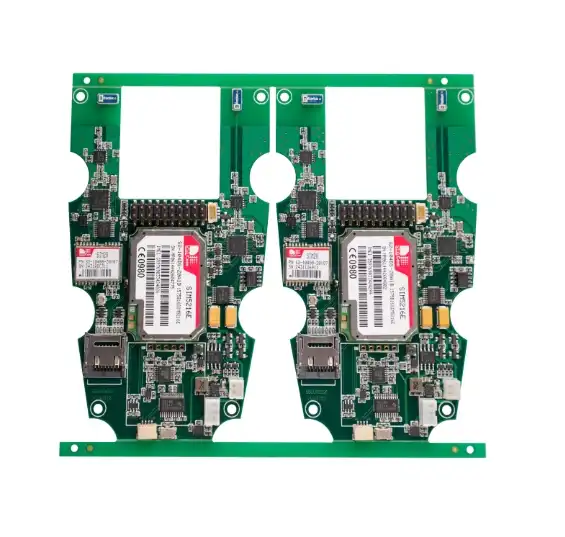Understanding the Fundamentals of Hybrid PCB Assembly
The Basics of PCB Assembly Techniques
Before delving into hybrid PCB assembly, it's crucial to understand the two primary PCB assembly techniques: through-hole technology and surface mount technology. Through-hole technology involves components with leads that are inserted through holes in the PCB and soldered on the opposite side. This method provides strong mechanical bonds and is often used for larger components or those that may be subject to mechanical stress.
Surface mount technology, on the other hand, involves placing components directly onto the surface of the PCB. SMT allows for higher component density, smaller form factors, and often lower production costs. However, SMT components may not be as mechanically robust as their through-hole counterparts.
The Emergence of Hybrid PCB Assembly
Hybrid PCB assembly emerged as a solution to leverage the advantages of both through-hole and surface mount technologies. This approach allows designers to use through-hole components for parts that require mechanical strength or heat dissipation, while utilizing SMT for the majority of the circuit to maintain a compact design. The result is a versatile PCB that can meet a wide range of performance and design requirements.
Key Components in Hybrid PCB Assembly
In a hybrid PCB assembly, you'll typically find a mix of component types. These may include:
- Through-hole components: Often used for connectors, large capacitors, or power components
- Surface mount devices (SMDs): Used for the majority of passive components and integrated circuits
- Ball Grid Array (BGA) components: Advanced SMT components with array of solder balls underneath
- Mixed-technology components: Some components, like certain types of connectors, may use both through-hole and surface mount technologies
The Manufacturing Process of Hybrid PCB Assembly
Design Considerations for Hybrid PCBs
Designing a hybrid PCB requires careful consideration of component placement, thermal management, and signal integrity. Designers must balance the need for through-hole components with the desire to maximize board space using SMT. This often involves strategic placement of through-hole components to minimize interference with SMT assembly processes.
Additionally, designers must consider the different soldering requirements for through-hole and surface mount components. This may involve specifying different solder alloys or temperatures for different parts of the board.
The Hybrid PCB Assembly Process
The assembly process for hybrid PCBs typically involves several steps:
- SMT component placement: Surface mount components are placed on the board using pick-and-place machines.
- Reflow soldering: The board is heated to melt solder paste and secure SMT components.
- Through-hole component insertion: Through-hole components are manually or automatically inserted into the board.
- Wave soldering or selective soldering: Through-hole components are soldered using wave soldering for entire boards or selective soldering for specific areas.
- Inspection and testing: The assembled board undergoes visual inspection, X-ray inspection for hidden solder joints, and functional testing.
Quality Control in Hybrid PCB Assembly
Quality control is paramount in hybrid PCB assembly due to the complexity of combining different technologies. Manufacturers employ various inspection techniques, including:
- Automated Optical Inspection (AOI): To check for component placement and solder joint quality
- X-ray inspection: To examine hidden solder joints, especially under BGA components
- In-Circuit Testing (ICT): To verify electrical connections and component functionality
- Functional testing: To ensure the assembled PCB performs as intended in its final application
Applications and Benefits of Hybrid PCB Assembly
Industries Benefiting from Hybrid PCB Assembly
Hybrid PCB assembly finds applications across various industries, including:
- Aerospace and Defense: Where reliability and performance are critical
- Automotive: For combining robust power components with compact control circuits
- Medical Devices: Where miniaturization and reliability are equally important
- Industrial Control Systems: For combining high-power components with sensitive control circuitry
- Consumer Electronics: Where space-saving designs need to incorporate certain through-hole components
Advantages of Hybrid PCB Assembly
The benefits of hybrid PCB assembly include:
- Design Flexibility: Allows for optimal component selection based on performance needs
- Cost-Effectiveness: Can reduce costs by using the most appropriate technology for each component
- Enhanced Reliability: Through-hole components provide robust connections for critical parts
- Space Efficiency: Maximizes board space by using SMT where possible
- Thermal Management: Allows for better heat dissipation for power components
- Ease of Repair: Through-hole components are often easier to replace in the field
Challenges and Considerations
While hybrid PCB assembly offers numerous advantages, it also presents some challenges:
- Increased Complexity: Combining technologies can complicate the design and manufacturing process
- Potential for Higher Costs: If not carefully designed, hybrid assemblies can be more expensive to produce
- Specialized Equipment: May require different types of assembly and soldering equipment
- Thermal Management: Ensuring proper heat distribution across different component types can be challenging
- Quality Control: Requires more comprehensive inspection and testing procedures
Conclusion
Hybrid PCB Assembly represents a significant advancement in PCB manufacturing, offering a versatile solution that combines the strengths of through-hole and surface mount technologies. This approach allows for optimal design flexibility, enhanced reliability, and cost-effectiveness in various applications. As technology continues to evolve, the demand for hybrid PCB assemblies is likely to grow, particularly in industries requiring high-performance, compact, and reliable electronic systems. When selecting a hybrid PCB assembly supplier or manufacturer, it's crucial to partner with experienced providers who can navigate the complexities of this advanced manufacturing process while ensuring top-quality results.

FAQ
What is the main difference between hybrid PCB assembly and traditional PCB assembly?
Hybrid PCB assembly combines both through-hole and surface mount technologies on a single board, while traditional PCB assembly typically uses only one method.
Is hybrid PCB assembly more expensive than other methods?
It can be more expensive due to the complexity of the process, but it often provides cost savings in terms of space efficiency and component selection.
What industries commonly use hybrid PCB assemblies?
Aerospace, automotive, medical devices, industrial control systems, and consumer electronics frequently utilize hybrid PCB assemblies.
Expert Hybrid PCB Assembly Services | Ring PCB
At Ring PCB, we specialize in high-quality hybrid PCB assembly, leveraging our state-of-the-art factory and comprehensive supply chain control. Our vertical integration ensures superior quality from raw material procurement to final testing. With our triple quality assurance process and global certifications, we deliver hybrid PCB assemblies that meet the highest industry standards. Whether you need a reliable PCB manufacturer or a turnkey PCB assembly service, our team is ready to exceed your expectations. Contact us at [email protected] to discuss your hybrid PCB assembly needs today.
References
1. Johnson, A. (2022). "Advancements in Hybrid PCB Assembly Techniques". Journal of Electronic Manufacturing, 15(3), 78-92.
2. Smith, B. et al. (2021). "Comparative Analysis of Through-Hole and Surface Mount Technologies in Modern PCB Design". IEEE Transactions on Components, Packaging and Manufacturing Technology, 11(2), 215-230.
3. Lee, C. and Wong, D. (2023). "Quality Control Measures in Hybrid PCB Assembly Processes". International Journal of Industrial Engineering, 30(4), 456-471.
4. Garcia, M. (2022). "Applications of Hybrid PCB Assemblies in Aerospace and Defense Industries". Aerospace Technology Review, 18(2), 123-138.
5. Brown, R. (2023). "Cost-Benefit Analysis of Hybrid PCB Assembly in Consumer Electronics". Journal of Manufacturing Economics, 25(1), 67-82.






